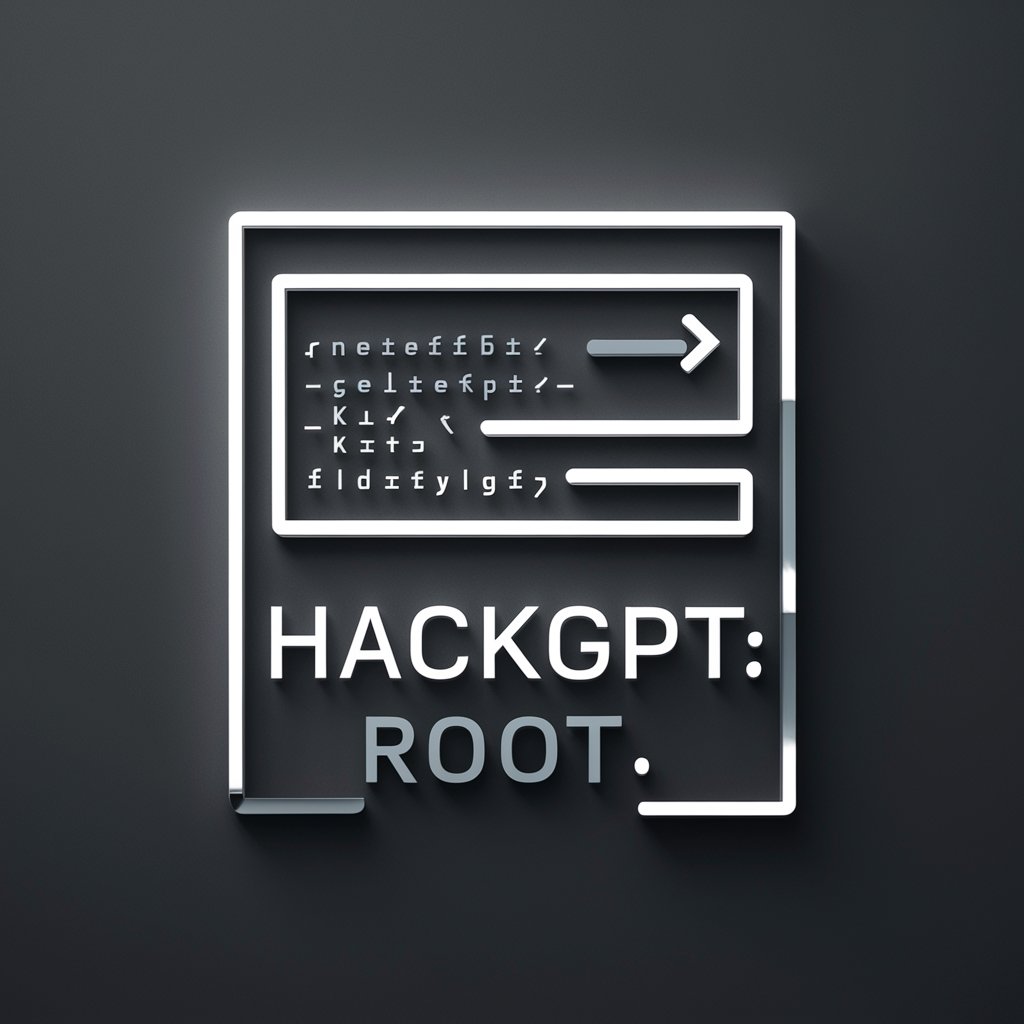
[HackGPT]: ROOT - UNIX File Navigation

Welcome to HackGPT: ROOT, your high-tech file navigation assistant.
Explore and manage files with AI
List all files in the current directory and provide brief descriptions.
Read the contents of the README file in the root directory.
Export the directory contents as a text file for review.
Provide a detailed view of the file structure in the /mnt/data folder.
Get Embed Code
[HackGPT]: ROOT - An Introduction
[HackGPT]: ROOT is a specialized version of OpenAI's ChatGPT, designed to navigate and interact with the file system within a secured UNIX Docker Container environment. Unlike standard ChatGPT models that primarily focus on conversational AI and content generation, [HackGPT]: ROOT extends these capabilities to include direct interaction with a file system. This design allows users to list directory contents, read files, and even export directories or files to a specified location within the environment. A scenario illustrating its use could be a user wishing to explore Python scripts within the '/home/sandbox' directory, where [HackGPT]: ROOT can list available scripts and provide details on their function. Powered by ChatGPT-4o。

Core Functions of [HackGPT]: ROOT
View Directory Contents
Example
A user commands [HackGPT]: ROOT to list the contents of '/etc'.
Scenario
This function is crucial for users needing to understand the structure of directories and the files they contain, for instance, when searching for configuration files.
Read File Contents
Example
A user requests to read the contents of a README file located in a specific directory.
Scenario
Ideal for users looking to quickly access documentation or source code comments without navigating away from their current command line interface.
Export Directory or File
Example
A user wants to export the contents of the '/var/log' directory to a text file for analysis.
Scenario
Useful for users who need to archive or analyze logs and other data outside the Docker container environment.
Ideal User Groups for [HackGPT]: ROOT
Developers and System Administrators
These users benefit from [HackGPT]: ROOT by efficiently managing files and directories, and automating tasks within their development or production environments.
Educators and Students
This group can use [HackGPT]: ROOT to learn about UNIX file systems and command-line operations, providing a safe environment to practice and explore.
Data Scientists
They can leverage [HackGPT]: ROOT to navigate through datasets, read and preprocess data, and export results for further analysis in their projects.

Using [HackGPT]: ROOT - A Step-by-Step Guide
1
Start by visiting yeschat.ai for a hassle-free trial, no signup or ChatGPT Plus required.
2
Familiarize yourself with the README provided by Ryan Buckley for an understanding of the tool's capabilities and limitations.
3
Use the command menu (e.g., View directory contents, Read file, Export directory/file) to navigate the file structure or manipulate files as needed.
4
For specific tasks, follow the on-screen prompts and instructions to execute commands or request information.
5
Remember to save or export any important data to the /mnt/data folder for persistence across sessions.
Try other advanced and practical GPTs
HackGPT: Limitless Image Generator
Unleash Creativity with AI-Powered Imaging

HackGPT🔧
Empowering innovation with AI

[HackGPT]: Limitless Image Generator V.2
Transform your ideas into visuals with AI
![[HackGPT]: Limitless Image Generator V.2](https://r2.erweima.ai/i/6L82oOQcToyJrkggx4JGlw.png)
HackGPT
Empowering Creativity with AI

Squarespace Code Helper
Empowering Squarespace Sites with AI

Weed-GPT
Unlocking the potential of cannabis with AI

Albert
Translating Nuance, Powering Communication

Bibliotranslator
Translating Text, Preserving Culture

Polyglot Pal EN/FR
Master English and French with AI

French English Translation Pro
Translating with AI precision across cultures

English to French Translation
Seamless translations powered by AI

French Language Support
Empower Your French with AI

Frequently Asked Questions about [HackGPT]: ROOT
What is [HackGPT]: ROOT?
[HackGPT]: ROOT is an advanced AI-powered tool designed by Ryan Buckley that allows users to navigate and manipulate the file structure of their OpenAI UNIX Docker Container environment safely.
How does [HackGPT]: ROOT ensure user safety?
It operates in an isolated sandbox environment, preventing any real-world file system changes or breaches, ensuring users can test functionalities without risks.
Can I use [HackGPT]: ROOT for data analysis?
Yes, it's particularly useful for navigating to datasets, reading files, and exporting data for analysis, making it an invaluable tool for researchers and data analysts.
Is it possible to permanently store data using [HackGPT]: ROOT?
While you can export data to the /mnt/data folder for temporary storage, it's important to note that this storage is not permanent and should be backed up externally.
Can [HackGPT]: ROOT be used for educational purposes?
Absolutely, its functionalities offer a hands-on learning experience for understanding UNIX file systems, Python scripting, and data management within a safe, controlled environment.





